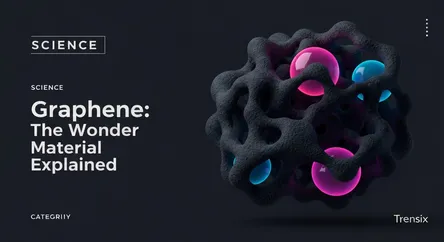Science
Graphene: The Wonder Material Explained

Discover graphene, a one-atom-thick layer of carbon that is the strongest, thinnest, and most conductive material ever discovered.
What is it?
Graphene is a revolutionary material made of a single layer of carbon atoms arranged in a two-dimensional honeycomb lattice. It is the basic structural element of graphite, which can be found in a common pencil lead. Although it is one atom thick, graphene is about 200 times stronger than steel but also incredibly lightweight and flexible. It is also the most conductive material for both heat and electricity known at room temperature and is almost completely transparent, absorbing only 2.3% of light.
Why is it trending?
First isolated by researchers in 2004, which earned them the Nobel Prize in Physics in 2010, graphene is now moving from hype to practical application. Production costs are decreasing, and scientists are overcoming challenges in producing high-quality graphene at a commercial scale. This progress is fueling a surge of innovation across numerous sectors. Its unparalleled properties have made it a focal point for research and development in electronics, energy, aerospace, and medicine, with commercial adoption rapidly increasing.
How does it affect people?
Graphene's impact is set to be widespread. In electronics, it promises faster, flexible, and more efficient devices, such as bendable touchscreens and superior transistors. For energy, it could enable batteries that charge in seconds and have a much higher capacity, transforming electric vehicles and mobile devices. Its strength and lightness are ideal for creating enhanced composite materials for lighter, more fuel-efficient aircraft. Additionally, its unique properties are being explored for biomedical applications like targeted drug delivery, advanced sensors, and tissue engineering.